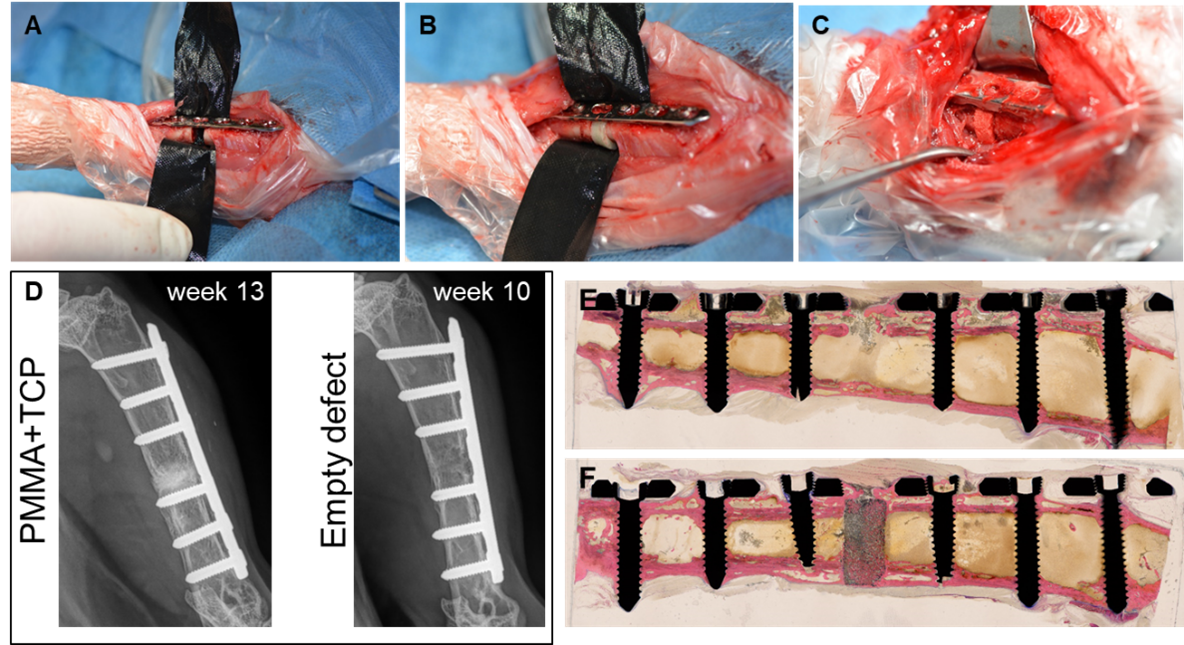Background
One of the few treatment modalities for large bone defects after treatment of fracture related infection is the induced membrane technique (IMT), however, prior to developing new interventions that treat infection and support bone healing, a suitable animal model is required.
Goal
To develop a rabbit humerus defect model that includes IMT and bone grafting due to infection.
Results
he first step was to transform our well-established model of humeral osteotomy in rabbits into a 5 mm defect model. The defect was filled with a PMMA spacer (Figure) to induce a membrane. After three weeks, the PMMA spacer was removed and exchanged for either a bone void filler (Tricalciumphosphate, TCP) or the defect was left empty. In total 11 rabbits were operated successfully suggesting the model is functional and bone healing is ongoing in the defect-filled group as well as in the empty defect group. In 2020 and 2021, the model has been modified to introduce the local infection and analyses of the histological results is ongoing.
-
PublicationSiverino C, Vanvelk N, Nehrbass D, Mischler D, Richards RG, Morgenstern M, Zeiter S, Arens D, Moriarty TF. Comparative bone healing with induced membrane technique (IMT) versus empty defects in septic and aseptic conditions in a novel rabbit humerus model. BMC Musculoskelet Disord. 2023;24(1):886. https://doi.org/10.1186/s12891-023-07031-3
-
Presentation
Siverino C, Arens D, Zeiter S, Richards RG, Moriarty TF. Bone defect healing using the induced-membrane technique after chronically infected non-union in a novel rabbit model. 2022 ICORS (oral)
Siverino C, Arens D, Zeiter S, Richards RG, Moriarty TF. Bone defect healing using the induced-membrane technique after chronically infected non-union in a novel rabbit model. 2023 ORS (poster)
-
Partner
Mario Morgenstern (MD), University Hospital Basel, Switzerland
Willem-Jan Metsemakers (Prof), University Hospitals Leuven, Belgium


